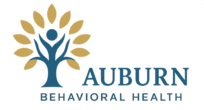Thinking about that final exam next week; that next project director’s meeting, or an upcoming speaking engagement? Feeling tense and anxious, even flush or breaking out in a sweat? Anxiety symptoms vary from person to person and can be mildly to moderately disturbing as a normal part of life, in response to facing challenging or threatening circumstances. Anxiety can provide the impetus to plan ahead, meet deadlines, focus on a task, and/or accomplish goals. In that sense, anxiety can be a motivator for success.
But when people experience intense anxiety that interferes with the quality of everyday life, it may be that an anxiety disorder is causing the distress and the individual may benefit from treatment. The first step is to see your primary care physician to make sure your symptoms are not the result of a physical illness. Once that’s determined and assuming there is no general medical condition better able to account for the symptoms, a combination of medication and psychotherapy may be recommended.
Three of the most common anxiety disorders are Generalized Anxiety Disorder, Panic Disorder and Social Phobia (or Social Anxiety Disorder). Psychotherapy or “talk therapy” is often helpful for individuals with anxiety disorders. Psychotherapies used to treat anxiety disorders may include but are not limited to Cognitive Behavioral Therapy, Family Therapy, and psychodynamic psychotherapy. When medically indicated, common medications used to treat anxiety disorders can include anti-depressant medications, anti-anxiety medications, and beta blockers.
The Anxiety and Depression Association of America (ADAA) define the primary symptoms of Generalized Anxiety Disorder as “persistent, excessive, and unrealistic worry about everyday things. People with the disorder, which is also referred to as GAD, experience excessive anxiety and worry, often expecting the worst even when there is no apparent reason for concern”. Panic Disorder is defined by the ADAA as the experience of “spontaneous seemingly out-of-the-blue panic attacks”, accompanied by the fear of a recurring attack. Panic attacks can occur without warning, even while sleeping. Social Phobia or Social Anxiety Disorder is defined as “the extreme fear of being scrutinized and judged by others in social or performance situations” (http//:www.adaa.org).
If you or someone you care about is experiencing any of these symptoms, please consider contacting my practice for additional information and to discuss opportunities for treatment that are designed to help alleviate anxiety symptoms. You or your loved one deserves a quality of life that is rich and fulfilling, not dampened by the potentially disabling symptoms of anxiety.
